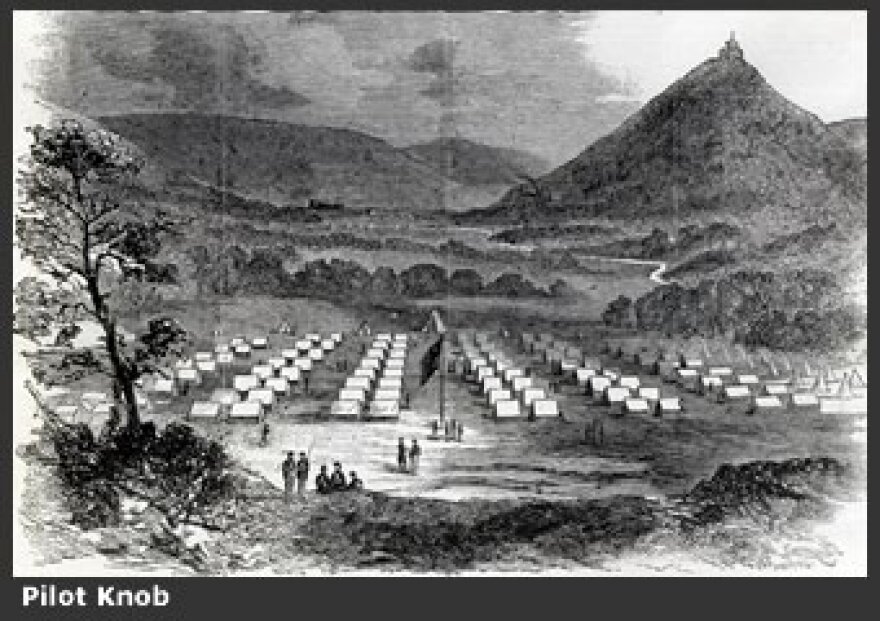It seems like Almost Yesterday that Union troops under General William Tecumseh Sherman were moving south against Atlanta. General Kirby Smith, Commander of the Confederate Trans-Mississippi Department, saw Missouri as a place to strike a blow at the Union by making a direct threat upon St. Louis. This, he believed, would force the transfer of Union troops from Atlanta, thus saving that vital supply center.
General Sterling Price, a former governor of Missouri, was selected to lead the expedition, and in early September of 1864 Price assembled 12,000 troops in Pocahontas, Arkansas and moved into Missouri heading toward the small mining town of Pilot Knob. There, Price thought, he could gain control of the St. Louis and the Iron Mountain Railroads, providing easy access to St. Louis. It seemed a swift and straightforward plan to alter the course of the war.
By September 25 the Confederate forces were gathered near Fredericktown and prepared to move on Pilot Knob. In anticipation of the Confederate assault, General Thomas Ewing and a contingent of Iowa Volunteers arrived at Fort Davidson, a small earthen fort close to Pilot Knob. They arrived only a few hours prior to the attack.
At approximately 2:00 p.m. on September 27, Confederate cannon fired from the top of Shepherd Mountain and a frontal assault upon Fort Davidson resulted in a brief but intense engagement with many casualties.
Price’s Confederates pulled back to regroup, while Ewing held a counsel of war culminating in a midnight decision to evacuate the fort. Within two hours, Union men and supplies were out of Fort Davidson and moving north towards Leesburg. The Battle of Pilot Knob was over. St. Louis was not threatened – and Atlanta was burned.







